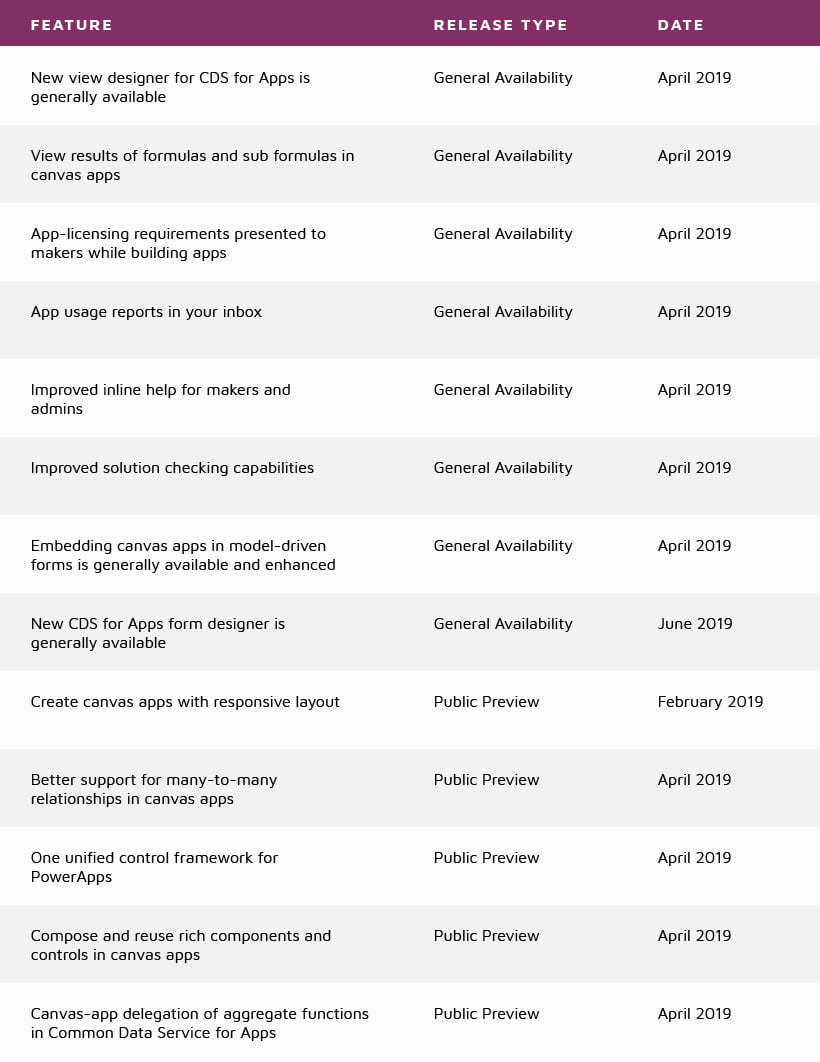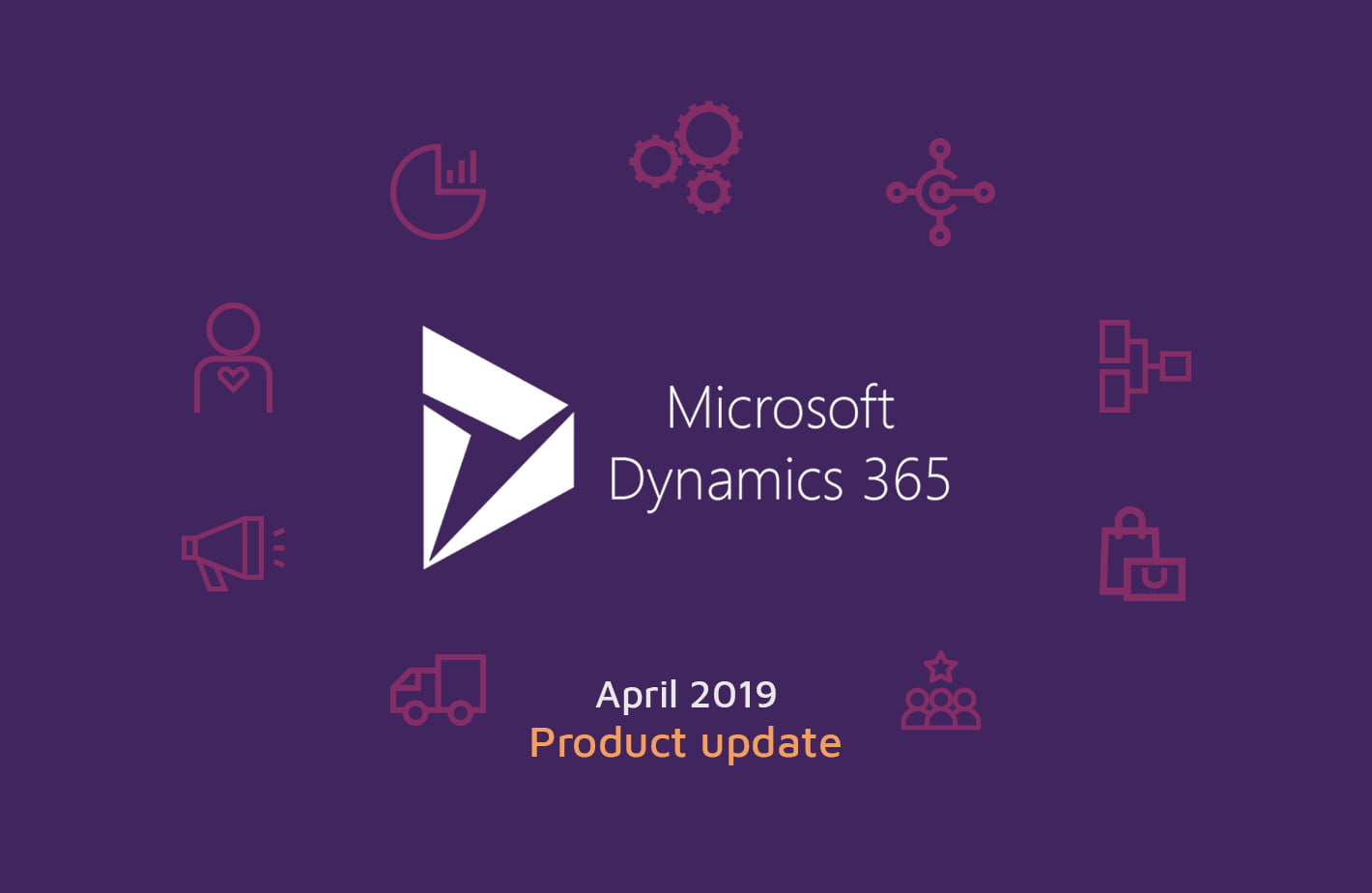Microsoft has published April 2019 release notes, a 315-page document that consists of the announcement of new features and enhancements for Dynamics 365 and Power Platforms. The new update which is set to be released between April and September 2019 is Microsoft’s continuous investment in capabilities to power digital transformation, from improving customer experience to modernising Dynamics 365 with AI-powered capabilities.
This first update of the year (second will be announced in October) describes how major product updates will be rolled out to all the Dynamics 365 and Power Platform apps. While the product updates mentioned in the release notes are not available yet, previews will be available starting from February 2019. Once the previews are available, Microsoft will provide a sandbox environment to Dynamics 365 users to help them explore and test features before the updates are deployed to production in April.
Although tons of product updates and enhancements are planned, this blog looks to provide an overview of the major product updates along with key release dates for each of the announced features in this blog. We will publish specific product-focused blogs in our upcoming posts.
What’s new for Dynamics 365 for Sales
For the April 2019 updates, Microsoft has focused mostly on customer relationship and quotation capabilities. With the new update, users can leverage the power of Dynamics 365, LinkedIn and Office 365 to build deeper customer relationships. According to the release notes, sales professionals will receive recommended content and notes through the sales playbook when working on an opportunity. This new feature will help the sales professionals to ensure that they are using the right content in the right context.
Another interesting feature is the configure-price-quote (CPQ) capability that will help sales professionals in putting together the right product solution and quote the solution to customers. This is a feature that is often requested by our customers, so we are delighted that this solution is being built into the product as standard. Dynamics 365 for Sales partners with the best CPQ solution providers to deliver deep product integration with Dynamics 365 for Sales. This enables the salespeople to quickly identify the right configuration of products that fit their customer’s needs and provide them with accurate quotes.

What’s new for Dynamics 365 for Marketing
The April 2019 release for Dynamics 365 for Marketing lights up new intelligent scenarios and enhanced extensibility capabilities so customers and partners can tailor the application to specific needs.
With the new extensibility capabilities, users can build a customer journey programmatically and modify its properties as needed — or build a new segment based on any existing segment. Users can also control entity lifecycles, such as starting, stopping, or editing a journey.
Website personalization is another interesting feature that will be rolled out in April 2019 update. Users can now personalize their landing pages for each prospect based on their attributes and past behavior. There will also be improved features in social marketing capabilities beyond its existing social insights and analytics.

What’s new for Dynamics 365 for Customer Service
The April 2019 release for Dynamics 365 for Customer Service will have plenty of new exciting features ranging from increasing channel flexibility to customers to improvement in case management and knowledge management.
- Key enhancements will be made in knowledgebase authoring and analytics experience.
- Knowledgebase admins can create knowledgebase templates for common scenarios like FAQs and how-to articles.
- Knowledgebase authors can leverage these templates to quickly create standardized articles.
- Knowledge management analytics can identify usage and respond to gaps in the knowledgebase.
- Knowledge managers will be able to analyze effective and ineffective searches and take appropriate action.
There is also an enhancement for Omni-channel Engagement Hub. Microsoft released the Hub in preview in the October 2018 release, while this feature will be generally available in the upcoming release. Omni-channel Engagement Hub is a customizable, high-productivity app built on the Unified Service Desk (USD) for agents working on multiple channels.

What’s new for Dynamics 365 for Field Service
In the October 2018 release, integration with Azure IoT Central was introduced to enable the flow of IoT information between IoT Central and Field Service. Azure IoT, which is a SaaS solution to connect, monitor, and manage IoT assets, allows users to create rules to identify conditions or events that require service action. Those come into Field Service as ‘IoT alerts’ and can be tracked and monitored in Field Service.
Now the April 2019 release is set to include the next level of integration with IoT Central to be fully embedded within the Field Service application. The flow of alerts can now be managed through cases and work can be defined based on the details of the alert.
There will also be major enhancements in scheduling capabilities. The October 2018 release brought single resource optimisation that helped organisations to quickly optimise the schedule for a selected resource. In the upcoming release, variable resource location will enable resources to work from different areas and have schedules reflect that shift in resources.

What’s new for Dynamics 365 Portal
In October 2018 release, Microsoft put its effort into making Dynamics 365 Portal an external customer facing platform for all Dynamics 365 applications. In this upcoming release, Microsoft continues to take further steps in realising that vision.
There will be enhancements to portal diagnostics tool that allows users to quickly resolve common issues and reduce the amount of time spent on diagnosing issues. The new release will also provide added support for Power BI integration which enables customers to access Power BI dashboards and reports to users who don’t have a Power BI account.

What’s new for the Power Platform
The April 2019 release will provide major improvements to help app makers build high-quality apps with more ease. This upcoming release will focus not only on introducing new capabilities but also on simplifying the existing features to increase productivity for app makers.
Some of the major updates will focus on providing a better platform for administrators, a unified interface for everyone, and more enhanced platform capabilities.
For app makers, PowerApps will introduce capabilities for reusable components, formula, and error handling improvements, and experience improvements to help them simplify their app building experience. Canvas apps will also introduce capabilities in working with the Common Data Service for Apps to simplify working with data and more advanced relationship concepts.

Key Dates:
February 1:
Preview available; admins will be able to opt-in for the April 2019 preview.
February 21:
Release notes updates; Microsoft will update the release updates with more details about the features.
April 2:
Virtual launch event; Microsoft’s product leaders will preview the new features.
April 5:
General availability; Microsoft will start a region-by-region deployment cadence to enable release features across its global customer base.





